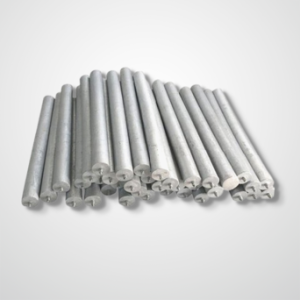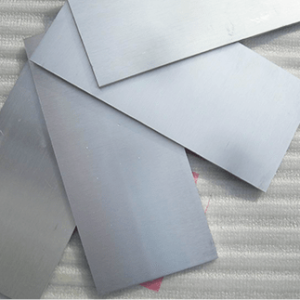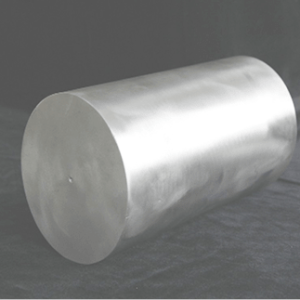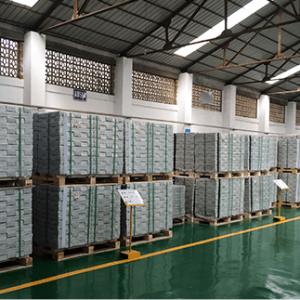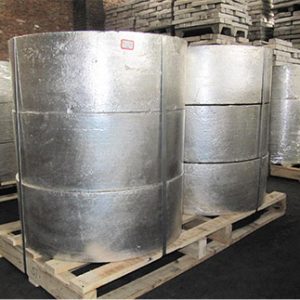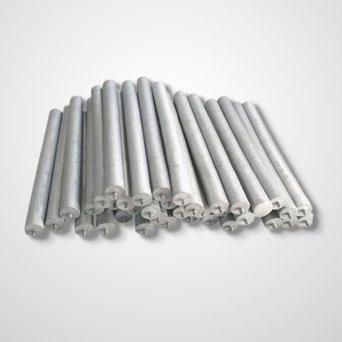Magnesium-based corrosion control materials with negative corrosion potential and high current efficiency compared to the protected metal. Commonly used Mg-Al-Zn alloy, manganese-containing magnesium alloy. Applied disciplines: materials science and technology (first-level discipline); metallic materials (second-level discipline); non-ferrous metal materials (second-level discipline); magnesium and its alloys (second-level discipline). Magnesium anode has high driving voltage, low current efficiency, high cost. Depending on the shape and electrode potential (open circuit potential), magnesium anodes can be used in soil or freshwater environments with resistivities ranging from 20 ohm·m to 50 ohm·m. Generally, it should not be used in environments with soil resistivity less than 10 ohm·m. The potential of the high-potential magnesium anode is -1.75V CSE, and the driving voltage is 0.85V; the potential of the low-potential magnesium anode is -1.55V CSE, and the driving voltage is 0.7V. The use temperature can reach 100°C. When the remaining amount of sacrificial anode is 15% of the initial weight, it is considered that the anode has failed. Therefore, the utilization rate of the anode is generally 85%.

